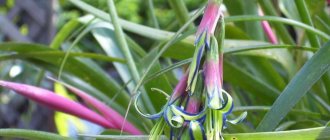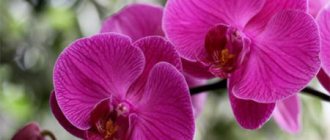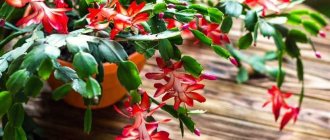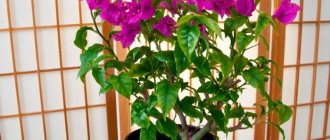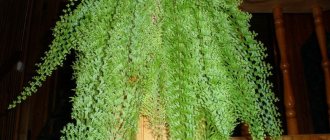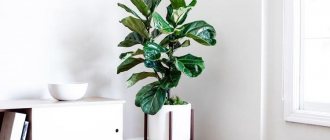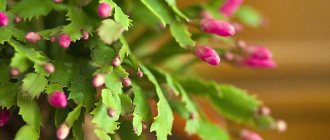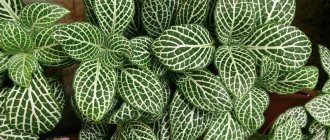Bougainvillea is a southern beauty that is often used to decorate the garden or liven up both home and office interiors. Since during its delightful flowering it can change even the gloomiest interior of a room for the better. After all, her charm and brightness with inspired romance will not leave anyone indifferent.
Bougainvillea is an evergreen climbing plant native to South America. There, growing in nature, it reaches 15 meters. It can be used to decorate any surface, as young shoots have good flexibility. The flower begins to bloom in April and blooms until the end of September. Its leaves are dense and pubescent, reaching 12 cm in length. Caring for a flower is not particularly difficult.
This name was given to the flower in honor of the French traveler Louis Antoine de Bougainville. After all, he brought this plant to Europe on a ship. At home, it sometimes looks like a bush with creeping branches. Perianths of different shades add decorative properties to this graceful shrub. Read how to grow roses here.
Description of the plant
The perennial shrub can reach five meters in shoot height. The stems of the plant - long and curly - subsequently thicken. As a result, the plant becomes a tree with an average height. Its shoots have dark brown bark. Over time, it turns gray and loses this color. Bougainvillea branches are “armed” with long and sharp thorns.
The bright green leaves of the plant have a pointed end with an ovoid or oval structure. The central vein is the place where a slight folding of the leaf plate is observed.
The perennial shrub can reach five meters in shoot height
The buds of the plant are five petals framed by three large bracts. Their color has a wide range of colors. Lovers of calm tones will like the bracts in white or cream colors.
Gardeners with a penchant for seeing a riot of colors in their homes opt for yellow and crimson options. The wilting of the bracts precedes the falling of the five petals themselves.
Under natural conditions, certain tropical butterflies and hummingbirds pollinate the plant. Without this maneuver, the fruit will not set.
Types and varieties of plants, appearance
There are about 15 species of Bougainvillea in the world, however, only 3 of them can be grown at home. New varieties are significantly different in their riot of colors and unusual edging on the petals.
Among the common types of this plant:
- Bougainvillea Naba - resembles a shrub that reaches a height of about 5 m. The petals have white, yellow, pink and red colors. The leaves of this plant are dark green in color with a glossy finish, their length varies between 10-15 cm and the width is 4-5 cm. This Bougainvillea has a small number of spines on its branches.
- Bougainvillea Beautiful, unlike Naked, reaches a height of about 15 m. It has larger bracts of rich pink and red colors. The leaves of Bougainvillea the Beautiful resemble hearts drooping downwards. Such a plant can stretch upward and curl around columns and buildings.
- Bougainvillea Peruviana is a climbing shrub with light yellow flowers and rich pink bracts. The leaves are not drooping and have an ovoid shape; the thorns are also not too large.
Also among the less common Bougainvillea varieties:
- Sanderiana flower.
- Vera Deep Purple.
- Glabra Donker.
- Bougainvillea Donya.
- Jamaica White.
- Bougainvillea White Cascade.
- California Gold.
- Golden Tango.
- Lateritia.
- Terry Bougainvillea Double Pink.
- Bougainvillea Bois De Roses.
- Snowcap Multi and Strawberry Lace.
Species diversity
It does not differ in an extensive list:
- Naked bougainvillea (Bougainvillea glabra). This plant is five meters high and has bracts of various colors. They can be white, yellow, purple, pink or red. The spines of this variety are not large in size. Naked bougainvillea is easy to shape because pruning is not a problem for it. 1850 was the period when Jacques Denis Choise, a Swiss botanist, described Bougainvillea glabra. The plant can be found in dry areas of Brazil. It usually likes rocky hills if they have carbonate soil.
Naked bougainvillea - Wonderful bougainvillea (Bougainvillea spectabilis). Fifteen meters in height are impressive indicators for a plant. Pink, red and purple bracts are large. With these parameters, something like a vine can wrap around the facades and walls of gazebos due to the flexibility of the shoots and a large number of thorns. The plant blooms from April to December. The homeland of the Wonderful (Beautiful) bougainvillea is the Brazilian tropical forests.
Wonderful bougainvillea - Peruvian bougainvillea (Bougainvillea peruviana). Humboldt, a naturalist from Germany, discovered this variety for gardeners in 1810. The climbing plant has yellow flowers framed by purple and pink round bracts. Peruvian bougainvillea has short thorns and thin, ovate leaves. Lateral shoots do not appear in this variety, so the variety is considered stable in terms of plant pruning. Colombia and Peru are home to Bougainvillea peruviana.
Peruvian bougainvillea
Three species were subsequently cultivated, and breeders developed the following varieties: - Australian Gold. A shrub with double bracts changes over time. Their original color changes from bright orange to pink. On large oval sheets, in some cases, burgundy spots appear.
- California Gold. The plant is interesting because it often confuses the flowering time and “transfers” it to the winter. It has golden bracts at the ends, which is why it got its name. Over time, this golden patina disappears and turns into a beige shade.
- Double Lilarose. Flame-like bracts are the main characteristic of this spectacular variety. They will delight the eye of a lover of all things beautiful for a long time, if you don’t overdo it with watering.
- Double Red. This variety is valuable because its purple-crimson color does not lose its brightness throughout the entire flowering period.
- White Cascade. The bracts of this variety are beautiful and resemble ivory in tone. Some of them may have a pink border.
- Beggum Sikkander. We are talking about an indoor plant with light green leaves. The bracts have a double color. The most popular combination is a white core and a purple frame.
The choice of variety depends on the preferences of the gardener and his ability to look after the plant.
Origin
The birthplace of the bougainvillea flower is Brazil, but it was discovered and named by the French traveler botanist Louis Antoine de Bougainville, who brought this wonderful plant to the eastern hemisphere. Here it was acclimatized and a hybrid was bred. In its homeland, bougainvillea can bloom for about 9 months.
Bougainvillea is classified as a shrub, but its branches have thorns and are able to cling to support, like a vine. The unique bright color of the plant is given not by flowers, but by bracts; they come in crimson, pink or white.
If you look at a photo of bougainvillea during the flowering period, you can’t see the leaves behind the bright bracts. Bougainvillea is also called paper flower.
Caring for Bougainvillea at home
The shrub is unpretentious in care, but there are clear recommendations on this issue.
Location and temperature
In its homeland of Brazil, the plant comfortably tolerates temperatures from + 5 °C. In other conditions, bougainvillea dies. The subtropical zone of the Caucasus allows you to grow shrubs in open ground. In some cases, when it gets colder, it is covered with film for prevention.
Central Russia is a territory where shrubs are grown in closed ground conditions. These can be greenhouses or greenhouses. If living conditions allow, then the option of planting bougainvillea in your home is also possible.
Bougainvillea at home requires compliance with clear rules for caring for it.
If you care for the plant correctly and provide it with growing conditions as close to natural as possible, then it can bloom several times during the year.
Creating natural light
In this case, a window sill on the south or west side of the home is suitable. Five hours a day is the maximum period for leaves and flowers to be exposed to direct sunlight. On a brightly lit afternoon, there is no need to hide the plant in the shade.
If this condition is not met, one cannot expect intense coloring of the perianths and their active growth. As a result, a lover of indoor greenery will receive a shrub with pale foliage and elongated shoots.
A window sill on the south or west side of the home is suitable for bougainvillea.
Draft protection
Bougainvillea does not tolerate them. This factor does not mean keeping the plant in conditions of complete lack of ventilation. The room where the bush is located should be regularly ventilated.
The main prohibition when ventilating it is that air flows do not enter the plant.
In warm weather, it is recommended to place it in an open area warmed by the sun, where there are no drafts.
Be careful when moving
Bougainvillea is a beauty with character, so it can be hostile to a sudden change of environment. During flowering, she will react especially sharply to other nuances of living. Under worse conditions, the shrub will say goodbye to its flowers and leaves. Then it can be restored if you return the bougainvillea to its comfortable zone.
Correct temperature
Spring and summer are the period when the room needs to be kept warm within 22-25 °C. During this time period, bougainvillea begins to actively grow.
In winter, it enters a dormant season, which requires a temperature of +12-16 °C. This reduction in heat in the room is necessary to create maximum conditions for the formation of buds.
In spring, bougainvillea will reward the care of the owner of the home with vigorous flowering.
If it is impossible to create such a temperature regime in winter, you can use a fluorescent lamp or phytolamp for additional lighting. The advantage of such a trick will be the imitation of artificial rest. Its disadvantage will be the weak flowering of bougainvillea in summer.
The room where the flower is located must be systematically ventilated, but be sure to protect the bush from drafts
Air humidity
The requirement of high humidity in the plant’s habitat is its small weakness. To create it, you need to regularly spray the bush. Soft, settled, filtered water is the ideal option in this case.
The correctness of spraying depends on timing indicators:
- Blooming season. During this period, it is not the bracts and leaves themselves that are sprayed, but the air surrounding them.
- Time to rest. The plant will appreciate being treated with water on both sides in its dormant state.
It doesn't hurt to use a container of liquid to increase the humidity in the bougainvillea's habitat. It is enough to place it next to the pot or use wet pebbles for the tray. If possible, it is recommended to purchase a humidifier.
The crop needs high air humidity
Watering
Spring and summer are the time to water the plant abundantly. It is important not to overdo it in trying to moisten the soil. Repeated watering is carried out after half the top soil layer has dried.
It is recommended to perform the procedure 1-2 times a week as follows:
- pour water until it flows out of the drainage holes;
- remove excess moisture from the pan to avoid stagnation;
- repeat watering every week in summer and two weeks in autumn/winter.
Cool indoor temperatures mean less frequent irrigation of the soil. Watering is canceled if the plant has dropped its leaves at rest.
Top dressing
For this purpose, you need to purchase liquid fertilizers. Potassium-based products are useful. phosphorus and iron. They will give flowering plants the opportunity to form a large number of buds.
You should strictly follow the instructions for the drug. If there is an excess of nutrition, the shrub will not please with lush flowering.
Land for Bougainvillea
The soil for the plant should be nutritious and light in texture. Its air and moisture permeability is important. If we are talking about an indoor option, then it is better to opt for a universal soil. Its parameters must correspond to pH values from 5.5 to 6.0.
The substrate can actually be prepared at home. His recipe:
- Preparation of the composition. For it you will need to take 2 parts of turf and leaf soil, 1 part of coarse river sand and humus. The looseness of the composition and its ability to prevent fungal infections will be created by chalk, ash, vermiculite and a couple of pieces of charcoal.
- Steaming the substrate. It can be replaced by simply pouring boiling water over the mixture. This must be done in order to ultimately obtain a product that is free from viruses, parasites and infections.
- Drying the mixture. It is carried out by laying the substrate on a tarpaulin. It will be more convenient to use a special dryer.
Pot
A large pot is not suitable for placing plants in it for the first time. If you ignore this warning, the bougainvillea will grow roots at an accelerated rate. As a result, the shoots will also become more massive and interfere with flowering.
The thinness of the roots will not allow them to adapt to a large volume of soil, and they will sour. The width of the pot should exceed its height. Its bottom needs to be covered with a large layer of drainage. With a height of 3-4 cm, it should consist of polystyrene foam, expanded clay and large pebbles.
The container should be high, but not too wide
Replanting Bougainvillea
The active life of the plant begins in early spring. It was then that the time for transplantation work came. When young plants grow actively, their height in greenhouse conditions will be three meters. It still depends on the size of the pot which "controls" these parameters.
New specimens need to be replanted annually. Without such actions, the nutritional value of the soil is then difficult to restore. If the bougainvillea is already “adult”, the number of transplants should be reduced to once every 3-4 years. Otherwise, it will begin to hurt, will not bloom and will shed its leaves.
Replanting Bougainvillea
Rules for replanting a plant:
- Accuracy. To avoid damage to the roots, use the method of transferring an earthen clod along with the plant. For this, an additional and slightly larger pot will be useful.
- Correct placement. There is no need to deepen the root collar into the prepared soil. A new substrate will be needed to fill the resulting free space.
- Moderate compaction. It is not recommended to compact the soil too much. However, the presence of voids in the pot is unacceptable.
- Watering. There is no need to be zealous when irrigating. It is enough to water the transplanted plant moderately.
- Placement in partial shade. Two days are enough for bougainvillea to adapt to the new substrate. After the announced actions, the pot with the plant is returned to its original place.
Bougainvillea blooming
The bright and long-lasting fragrance of the inflorescences of this gift from tropical lands is its main trump card. Bougainvillea buds begin to form in winter. At the beginning of May they form an impressive bouquet.
Due to its lushness, the foliage is almost invisible. You can observe this flowering from May to December.
Trimming
The main factor in properly growing a plant is pruning according to the rules. Without it, giving the shrub a decorative appearance and promoting its flowering is impossible. Pruning a couple of times a year is enough to create the correct shape for the plant.
In the spring it is carried out to remove branches that have been damaged over the winter. In the summer, flower growers get rid of inflorescences that have lost their beautiful appearance. In autumn, the plant begins to prepare for the winter dormancy season.
Young shoots should be shortened by ⅓, taking into account the preservation of 6 to 8 buds on each of them. Sometimes you have to cut them down to the trunk if they cannot match the decorative appearance of the shrub.
Three-year-old and older shoots should not be touched because of the likelihood of damaging the plant.
What bougainvillea will look like in the future depends on the preferences of the grower. Options for the future form are a multi-stemmed bush, liana and bonsai. Then you can turn on your imagination and give the voiced outline even more interesting contours.
For lovers of exotic mini-trees, it is best to opt for the “bonsai” model. Bougainvillea with this shape is created in several stages:
- Primary pruning. With it, all branches are eliminated, except for two or three of the most successful ones.
- Observation period. You need to wait for the plant to lignify, which can take a long period of time.
- Cardinal circumcision. Its main purpose is to remove the branches in the center onto the stump.
- Repeated waiting. It lasts until the plant acquires new shoots.
- Control of shoots. It consists of pinching long ones, eliminating unnecessary ones and creating drainage for deviating shoots.
- Grafting cuttings. They do it on bald branches using a drill and then insert new material into the hole.
After grafting, the drilled area should be treated with medical glue for better engraftment.
An important procedure when cultivating bougainvillea indoors is its pruning.
Bougainvillea propagation
There are three types of plant propagation. It is necessary to understand the features of each of them.
Cuttings
This is a simple and effective method, which is the most popular among flower lovers. Its scheme is simple:
- Preparation of planting material. Cuttings that were cut in June will be useful. The main thing is that they are semi-lignified.
- Rooting. To do this, you will need to acquire a mixture of sand and peat in advance. It is placed in a plastic cup or container with a lid and moistened. Conditions for rooting: temperature within 25-26 °C, ventilation and humidification of the greenhouse.
- Transfer. After 1.5-2 months, the cuttings will be sufficiently rooted. This will serve as a signal to replant it in a pot with the prepared composition. It includes leaf soil, peat, sand and compost. The height of the pot should not exceed 7-9 cm.
- Growing up. It is produced in a bright place at a temperature of about 20 °C.
- Pinching. There is no need to do it before the shoots grow to 5 cm.
- Repeated transplant. Now you need to choose a larger pot for drainage: 11-12 cm in diameter.
- Care. Young bushes must be watered abundantly, and the root system should not be stagnant in moisture.
Reproduction by air layering
There is no time limit for such a process. It is enough to place two containers next to each other: a pot with a plant and a dish with a moistened substrate. A suitable young shoot should be found on the mother plant. The place of its further rooting is scratched or transversely cut.
Then you need to bend the shoot to the ground from a neighboring pot. He himself will not be able to strengthen himself without fixing with a metal pin. Air layering should soon be removed from the mother plant when roots appear. It's time to transplant them into a separate pot.
Propagation using seeds
Not every flower lover will choose this method of propagation. It requires the presence of pollinators in the form of insects. It is impossible to find hummingbirds in their native lands, because birds live in the subtropics and tropics. If you want to start propagating using purchased seeds, you should have a lot of patience.
The time for sowing seeds is the end of February - mid-April. Initially, you need to soak them for a couple of hours in a biostimulator. The seeds are placed in a substrate of equal components of peat, leaf soil and sand. If possible, it is replaced with a finished product for flower seedlings.
In a container with a lid, the seeds are placed according to the following scheme: depth - 5 mm, distance between them - 2-3 cm. After closing the lid, the container is placed in a place with a temperature of 26 ° C with the recommendation of bottom heating. The seedlings are ventilated and sprayed with purified water.
It is necessary to take care of lighting in advance, which becomes problematic in winter. The problem will be solved by using a phytolamp or a fluorescent lamp.
The container lid is opened 2-3 months after germination. Next, the future shrub is grown in a pot with soil and drainage.
Growing bougainvillea from seeds is not easy. The main difficulty lies in obtaining seeds, since in indoor conditions there are no insects that carry out pollination.
Why doesn't Bougainvillea bloom?
A capricious plant can bloom well. This will not happen if:
denying the bush winter rest;
- non-compliance with year-round light regime;
- planting a plant in a large pot;
- freezing of bushes in winter;
- overfeeding bougainvillea with nitrogen fertilizers.
To properly care for a plant that does not bloom, you should:
- stop fertilizing;
- limit spraying and watering;
- monitor the temperature.
The appearance of buds on young shoots is a signal for the gradual introduction of feeding and regular watering.
If bougainvillea does not form inflorescences when grown indoors, this indicates errors in care or maintenance conditions
Indoor varieties
Bougainvillea is a fast-growing shrub for sunny or slightly shady locations. This is a perennial plant; in natural conditions, the length of its shoots reaches 12 meters.
Bougainvillea (lat. Bougainvillea) comes from Brazil. It is a vine with woody shoots covered with thorns for sunny or slightly shady locations. This is a perennial plant; in natural conditions, the length of its shoots reaches 12 meters.
Two types of bougainvillea are often found on sale: Bougainvillea spectabilis and glabra Bougainvillea - reaching smaller sizes than the first species.
Bougainvillea is decorated with bright, delicate bracts, usually in various shades of pink, that surround very inconspicuous flowers.
In warmer climates, bougainvilleas are planted in gardens, fences, pergolas and house walls. We grow bougainvillea as a houseplant.
Bougainvillea diseases
The resistance of a tropical plant to various pathologies is worth envy. Does bougainvillea shed its leaves before winter dormancy? There is no need to worry about this natural process. If a process unpleasant for the gardener occurred in another season, then the rules for caring for the shrub need to be reconsidered.
By certain signs you can find out the cause of the “disease” of an ornamental plant:
- Dropping bracts. It is because of their beauty that bougainvilleas are purchased. The reasons for the loss of bracts should be sought in moving to a new place, the end of the summer season and insufficient lighting.
- Disappearance of bright colors. The bracts become faded due to chlorosis. This disease occurs due to improper feeding, which does not include iron.
- The appearance of white spots on the leaves. They arise from insufficient ventilation or when the substrate is overly moistened. Damaged leaves should not be left on the bush.
- Yellowing of leaves. It will disappear if you stop feeding and spraying the plant for a while. In the spring and summer, such an unpleasant phenomenon rarely occurs.
- Stopping plant growth. It's time to change the cramped pot to a more spacious container. Old shrubs over 10 years old should be used as propagation material.
- The plant disappears for an unknown reason. It is possible that its root system is rotting. Bougainvillea will disappear if the affected roots are not cut off. It is recommended to keep a healthy part of them in phytosporin for a little while. Replanting into a new substrate will help complete the treatment of the affected shrub.
If soft white spots have formed on the surface of the leaf plates, this indicates that there is constant stagnation of liquid in the soil mixture, and the room is poorly ventilated
Pests of Bougainvillea
Bougainvillea is not a treat for any parasites, but their appearance is still likely. Unwelcome guests may include:
- aphid;
- spider mite;
- mealybug;
- red tick;
- powdery mildew.
Unpleasant visitors are able to attack bougainvillea during the warm season. Bougainvillea can also suffer damage during winter dormancy if it attracts mites.
In this case, you need to follow the instructions:
- Elimination of problem areas. Affected branches and leaves must be destroyed after cutting.
- Washing the plant. The entire bush, even its entire zones, should be rinsed with warm water.
- Treatment. After the bougainvillea has dried, you need to apply Fitoverm or Actellik to it, taking into account three times daily treatment with them with a break of three days.
- In case of serious damage, the mentioned drugs cannot be used. Karbofos will come to the rescue when it comes to powdery mildew.
It is extremely rare for sucking pests to settle on bougainvillea.
Growing bougainvillea in the garden
Since this is a heat-loving shrub, a cold snap even down to zero degrees can cause the complete death of the plant. Therefore, growing bougnvillea is possible only in areas where the winter temperature does not drop below 5 degrees Celsius.
In this case, pruning is carried out throughout the warm period, otherwise only long single branches with flowers at the ends will predominate on the bush. Therefore, most often the plant is used as a tub, which is taken out onto the terrace only in the warm season.
Expert advice - how to grow bougainvillea at home video
Read all about barberry here.



